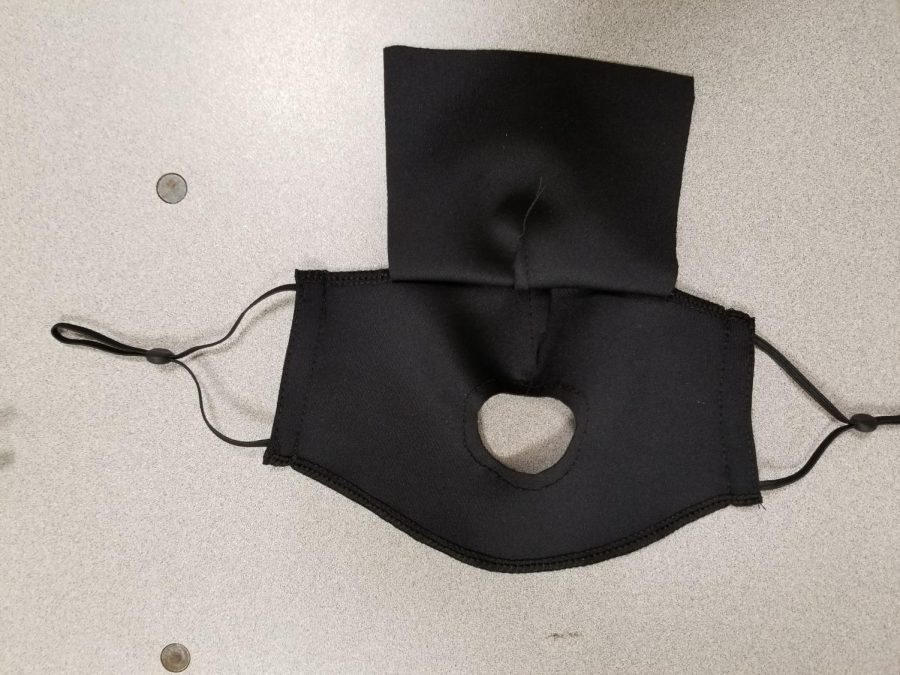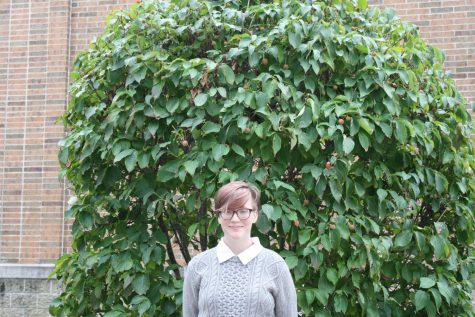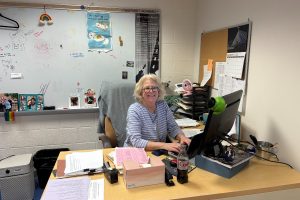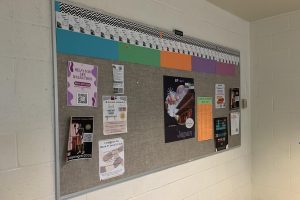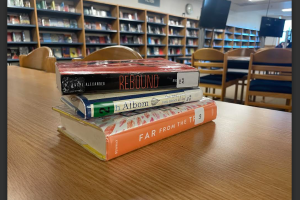The band program introduces new masks and spacing
Instrument masks designed with a cut-out and flap.
February 10, 2021
As winter settled in, tired students trekked down the band stairs slowly. Though they were going to band, not a single one of them had an instrument case. With COVID-19 guidelines, they were unable to play indoors, but with the harsh New England winter outside, playing outside wasn’t an option. Now, however, bright melodies echo through the hallways and the students return to the band room each morning, instruments in hand, ready to play once more.
The Westford Academy band recently started using new masks with a unique design that allows them to play while in-person. The masks have a small cut-out just big enough for a mouthpiece, and a fabric flap that covers it while students are not playing. Before this, percussionists were able to play through the winter, but due to the cold temperatures outside, winds were working on composition and music theory.
A study done by Colorado State University showed that playing an instrument does produce a lot of aerosols which are different gases that are distributed through the air. However, the study showed that masks help to reduce this spread of aerosols.
“[The hole] is basically just big enough to fit any kind of mouthpiece through,” band director Michael Soo said. “[…] But it’s just enough to allow you to get your mouthpiece where it needs to be without having any extra space because we want to keep the airflow down to a minimum.”
Affectionately called “the changing of the masks”, the mask-switching process happens at the beginning and end of each band class. A door on the side of the band room leads directly outside and students leave the room and spread out to change their masks. They enter through another door that leads into the band hallway, and from there can go back into the band room. The process occurs outside to help facilitate air filtration in the room.
“It’s basically a ceremony at this point,” Soo said, ” And it also gives the filters in the room that were installed over the summer, to do their job a little bit so that when the next class comes in the air has been properly filtered.”
The new masks were the beginning of the changes. In order to comply with Massachusetts guidelines, the band must also stand further apart while playing. Standing ten feet apart posed a new challenge for Soo and his band. Consequently, the set up is a much longer process. Soo shows up early to put the seats where they need to be and sanitize the room. As well as this, the level of peer interaction has declined. Even so, they remain optimistic.
“I was able to figure out how to fit 14 students into the band room all spaced out ten feet apart, [and it’s] miraculous that that was able to happen because I honestly didn’t think it would be possible,” Soo said.
With all of these new changes, switching to a new protocol has been challenging for many members of the band, but they have worked hard to be able to play again.
“[…] I know that we have been very concerned about student safety and this was a very complex process to put through,” Soo said. “[…] And I understand that people had concerns across the board from the student level all the way up. But their flexibility and everyone’s patience as well, towards making this become a reality has been tremendous.”

